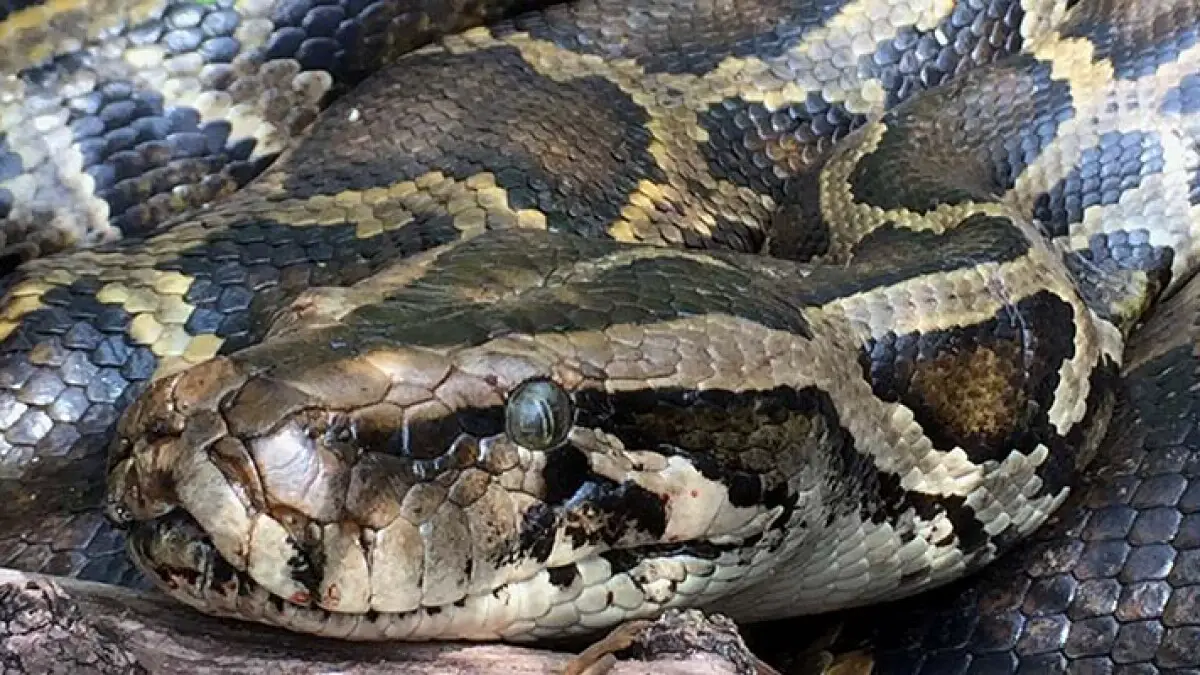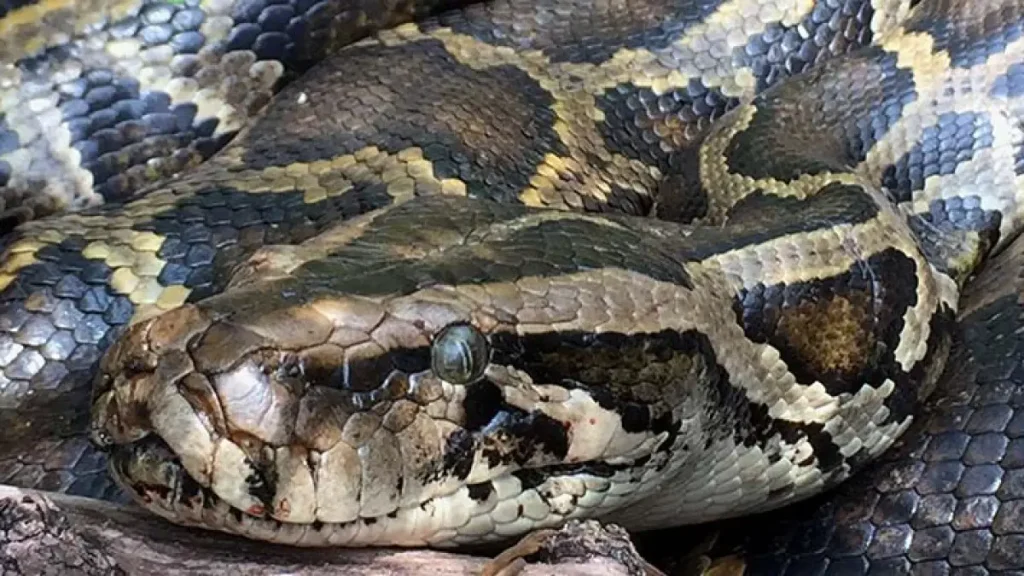The Burmese python has become a major problem in Florida, causing ecological disruptions and posing a threat to native species. With their ability to grow up to 23 feet long and weigh over 200 pounds, these snakes have no natural predators in the region and are reproducing at an alarming rate. So, what can we do to get rid of them?
There are several methods being used to control the population of Burmese pythons, including hunting, trapping, and even using trained dogs to sniff them out. However, these efforts alone may not be enough to eradicate the species. It will take a combination of strategies and the cooperation of the public to effectively manage this invasive species and protect Florida’s delicate ecosystem.
To get rid of Burmese Pythons, it is important to take a proactive approach. Some effective methods include setting traps, hiring professional snake hunters, and participating in python removal programs. Additionally, it is important to prevent the spread of invasive species by not releasing pet snakes into the wild and reporting any sightings to local authorities.

What Can We Do to Get Rid of Burmese Python?
Burmese pythons are invasive species that wreak havoc on Florida’s ecosystem. These snakes are not native to Florida, and they have no natural predators. As a result, they have multiplied in large numbers, causing various ecological problems. In this article, we will discuss what we can do to get rid of Burmese pythons.
1. Hunting and Trapping
Hunting and trapping are two effective ways of controlling Burmese python populations. Professional hunters and trappers can legally catch Burmese pythons in designated areas. The captured snakes are then euthanized, and their bodies are used for research and education purposes. Trapping is also a popular method of capturing Burmese pythons. Traps are set up in areas where the snakes are known to be present. Once caught, the snakes are removed from the trap and euthanized.
Benefits of Hunting and Trapping
– Reduces the population of Burmese pythons in the wild.
– Provides opportunities for research and education.
VS
– Can be dangerous for inexperienced hunters and trappers.
– Can be costly.
2. Using Dogs
Dogs have an excellent sense of smell and can be trained to detect Burmese pythons in the wild. They are often used in conjunction with hunting and trapping. The dogs are trained to locate the snakes and alert their handlers, who can then capture and remove them.
Benefits of Using Dogs
– Can be a cost-effective method of finding and capturing Burmese pythons.
– Dogs are a non-lethal means of controlling the population.
VS
– Requires specialized training for both dogs and handlers.
– Not always effective in locating Burmese pythons.
3. Sterilization
Sterilization is a method of reducing the population of Burmese pythons without killing them. The snakes are captured and then surgically sterilized. They are then released back into the wild, where they are unable to reproduce. Over time, the population of Burmese pythons will decrease.
Benefits of Sterilization
– Humane method of population control.
– Does not harm the environment.
VS
– Can be costly and time-consuming.
– Not always effective in controlling the population.
4. Education and Awareness
Education and awareness campaigns can help reduce the number of Burmese pythons in the wild. The public can be educated about the dangers of releasing non-native species into the environment. Awareness campaigns can also inform people about the proper care and handling of pet snakes.
Benefits of Education and Awareness
– Helps prevent the introduction of non-native species into the environment.
– Encourages responsible pet ownership.
VS
– May not be effective in controlling the population of Burmese pythons.
– Requires ongoing efforts to maintain public awareness.
5. Research and Monitoring
Research and monitoring are essential to understanding the behavior and ecology of Burmese pythons. This information can be used to develop more effective control strategies. Monitoring programs can also help track the population of Burmese pythons over time.
Benefits of Research and Monitoring
– Provides valuable information for developing control strategies.
– Helps track changes in the population over time.
VS
– Can be costly and time-consuming.
– Requires specialized training and equipment.
6. Chemical Control
Chemical control is a method of controlling Burmese python populations using chemicals that are toxic to the snakes. These chemicals can be applied to areas where Burmese pythons are known to be present. Once the snakes come into contact with the chemicals, they are killed.
Benefits of Chemical Control
– Can be a cost-effective method of controlling the population.
– Does not require specialized training.
VS
– Can harm other wildlife and the environment.
– Can be dangerous if not used properly.
7. Encouraging Natural Predators
Encouraging natural predators, such as alligators and birds of prey, can be an effective way of controlling Burmese python populations. These predators are natural enemies of the snakes and can help keep their numbers in check.
Benefits of Encouraging Natural Predators
– Provides a natural means of population control.
– Does not harm the environment.
VS
– May not be effective in controlling the population of Burmese pythons.
– Can be difficult to encourage natural predators to target Burmese pythons.
8. Physical Barriers
Physical barriers, such as fences and walls, can be used to prevent Burmese pythons from entering certain areas. These barriers can be effective in protecting vulnerable ecosystems and preventing the spread of invasive species.
Benefits of Physical Barriers
– Provides a physical means of controlling the population.
– Can be a cost-effective method of protecting vulnerable ecosystems.
VS
– May not be effective in preventing the spread of Burmese pythons.
– Can be expensive and difficult to maintain.
9. Removing Habitat
Removing habitat, such as dense vegetation and water sources, can be an effective way of controlling Burmese python populations. These snakes require specific habitats to survive, and by removing these habitats, their numbers can be reduced.
Benefits of Removing Habitat
– Can be an effective method of controlling the population.
– Does not harm the snakes or the environment.
VS
– Can be difficult to remove habitat in certain areas.
– May have unintended consequences on other wildlife.
10. Public Participation
Public participation is crucial in controlling the population of Burmese pythons. The public can report sightings of Burmese pythons and help with monitoring and removal efforts. Public participation can also help raise awareness about the dangers of invasive species.
Benefits of Public Participation
– Provides valuable information for monitoring and removal efforts.
– Encourages public awareness and participation.
VS
– Requires ongoing efforts to maintain public participation.
– May not be effective in controlling the population of Burmese pythons.
Frequently Asked Questions
Here are some of the commonly asked questions about getting rid of Burmese Pythons and their answers:
What are Burmese Pythons and why are they a problem?
Burmese Pythons are large constrictor snakes native to Southeast Asia that have become an invasive species in Florida. They were introduced to the state as pets but have since been released into the wild or escaped captivity and established a breeding population. They pose a threat to native wildlife and can also be dangerous to humans.
Due to their adaptability and lack of natural predators in Florida, Burmese Pythons have become a major ecological problem. They have been known to eat a wide variety of animals, including birds, mammals, and reptiles, which can disrupt the food chain and upset the balance of ecosystems.
What methods are being used to control Burmese Python populations?
Several methods are being used to control the Burmese Python populations in Florida. One method is the use of trained dogs to locate pythons in the wild, which has proven to be effective in detecting the snakes. Another method is the use of traps, including baited traps and funnel traps, to capture the snakes. Additionally, there are hunting programs that allow licensed individuals to hunt and remove pythons from the wild.
Many researchers are also working on developing new methods for controlling python populations, such as using pheromones to attract the snakes and developing new traps that are more effective at capturing them.
Can Burmese Pythons be eradicated from Florida?
While it may not be possible to completely eradicate Burmese Pythons from Florida, it is possible to reduce their numbers and limit their impact on the environment. A combination of methods, including hunting, trapping, and research into new methods, is being used to control the population. It is important to continue these efforts to prevent the spread of the snakes to new areas and protect native wildlife.
It is also important to educate the public about the dangers of releasing non-native species into the wild and to discourage the practice of keeping exotic pets that can become invasive species.
Are there any risks associated with hunting Burmese Pythons?
Hunting Burmese Pythons can be dangerous and should only be attempted by experienced individuals. Pythons are large, aggressive snakes that can cause serious injury or death if not handled properly. Additionally, hunting in the Florida wilderness can be challenging and poses its own set of risks, such as getting lost or encountering other dangerous wildlife.
It is important to follow all safety guidelines and regulations when hunting Burmese Pythons, including wearing protective gear and obtaining the proper licenses and permits.
What can individuals do to help control the Burmese Python population?
Individuals can help control the Burmese Python population by reporting sightings of the snakes to local authorities or the Florida Fish and Wildlife Conservation Commission. They can also participate in python removal programs or volunteer for research studies aimed at developing new methods for controlling the population.
Additionally, individuals can help prevent the spread of non-native species by not releasing exotic pets into the wild and properly disposing of any unwanted pets or animals.
Why don’t they just shoot the Pythons in Florida?
In conclusion, the Burmese Python is a serious problem in the state of Florida. However, there are a variety of steps that we can take to help eradicate this invasive species. First and foremost, education and awareness are key. By educating ourselves and others about the dangers of the Burmese Python, we can work towards preventing their spread and reducing their population.
Another important step is to encourage responsible pet ownership. The vast majority of Burmese Pythons in Florida were released into the wild by their owners. By promoting responsible pet ownership and discouraging the release of these animals into the wild, we can help prevent further infestation.
Finally, it is important to support organizations and initiatives that are working towards the eradication of the Burmese Python. Whether through volunteering or donations, we can all do our part to support these efforts and make a difference in the fight against this invasive species.
In short, while the Burmese Python is a formidable foe, there are steps that we can take to mitigate its impact. By raising awareness, promoting responsible pet ownership, and supporting efforts to eradicate the species, we can work towards a future where the Burmese Python is no longer a threat to Florida’s ecosystem.


